As cities throughout the nation cope with widening revenue gaps and cultural disparities, one persistent concern is that the place you reside has a profound affect on the alternatives obtainable to you.
In Chicago, a metropolis of neighborhoods every with its personal wealthy tradition and historical past, the connection between housing, entry to transportation, and upward mobility is essential for progressing the flexibility to succeed in jobs, colleges, healthcare, and different necessities that form financial alternative, well being outcomes, and total high quality of life.
For a lot of residents, transportation is extra than simply about getting from Level A to Level B; it’s a matter of fairness and survival.
Who Faces the Longest Commutes in Chicago?
In accordance with information from the U.S. Census and the Chicago Metropolitan Company for Planning (CMAP), some residents spend considerably extra time in transit with regards to each day journey throughout Chicago than those that already work within the downtown or northern areas, the place jobs are plentiful.
In neighborhoods like Englewood, Roseland, Austin, and Little Village, communities which are predominantly Black and Latino, residents could usually face commute instances that exceed an hour every means.
Against this, these dwelling in substantial neighborhoods, corresponding to Lincoln Park or the West Loop, usually get pleasure from commute instances of below 20 minutes.
Lengthy commutes have been linked to a variety of adversarial outcomes, together with:
- Elevated stress and fatigue
- Larger danger of job loss or poor attendance
- Fewer possibilities to pursue job coaching or persevering with training
- Decreased time for parenting, relaxation, or involvement locally
The each day journey to work might be difficult at instances. Nonetheless, as town and area work towards extra equitable transit planning, efforts are being made to enhance commute instances and repair in underserved areas, offering extra entry to transportation, even when it’s electrical.
A Experience By way of the Metropolis
Final month, I traveled throughout town, highlighting main transit choices, from the ninety fifth Avenue Crimson Line to the Loop, as much as the North Aspect, and west to Forest Park on the Blue Line.
All through the journey, I noticed how every neighborhood uniquely makes use of public transportation, CTA trains and buses, Metra rail, Divvy bikes, and electrical scooters, tailoring their decisions primarily based on affordability, security, and effectivity.
One second that stood out: stepping out of my automotive close to the 103rd Avenue Metra station, I watched a younger feminine scholar zip by on a lime inexperienced scooter, doubtless heading again towards Corliss Excessive Faculty.
That fast experience could have solely taken minutes, however for that younger particular person, it represented entry, independence, and the ability to maneuver freely by means of their neighborhood.
Michelle Walker, a paraprofessional at Fenwick Excessive Faculty in Oak Park, shared her expertise as an everyday public transit commuter. She highlighted each the advantages and challenges of counting on the practice system for her each day journey.
“Taking public transportation has improved my each day routine. Strolling to and from the practice offers me extra train, I keep away from site visitors, and I save loads on fuel—what I spend on two weeks of commuting is about the identical as a single tank of fuel. Nevertheless, some challenges embody waking up early to remain on schedule, being tied to the practice’s fastened timetable, and dealing with potential delays throughout the commute,” stated Walker.
Vanessa Abron, who often takes the Metra, shared that her expertise varies relying on the time of day. “I stay distant, so throughout busy rush-hour instances, the experience would possibly take about 45 minutes. But when the practice stops at each station, it could possibly take an hour and even longer.”
She additionally highlighted some challenges with the Metra schedule. “Should you’re not commuting throughout rush hour, the wait instances between trains might be lengthy. Simply final week, I noticed a person miss his cease as a result of the doorways didn’t open in time. On the CTA, you’ll be able to often get off on the subsequent cease and backtrack simply. On Metra, although, that might imply ready one other hour or having to name an Uber or a buddy for a experience.”
Moreover, Abron shared issues about security at sure stations. “I’ve by no means had a problem personally, however a number of the Metra Electrical Line stations at night time really feel a bit too darkish. They may positively be higher lit,” she stated.
Wanting Again to Transfer Ahead: How Historical past Shapes Chicago’s Transportation Challenges
To grasp at present’s transportation panorama in Chicago, it’s important to acknowledge the historic context that formed it. From the Nineteen Thirties by means of the Nineteen Sixties, federal companies and native banks systematically denied loans and insurance coverage to residents in predominantly Black neighborhoods, a discriminatory observe often called redlining.
These redlined areas weren’t solely marginalized financially but in addition minimize off from essential investments in infrastructure, together with dependable public transportation.
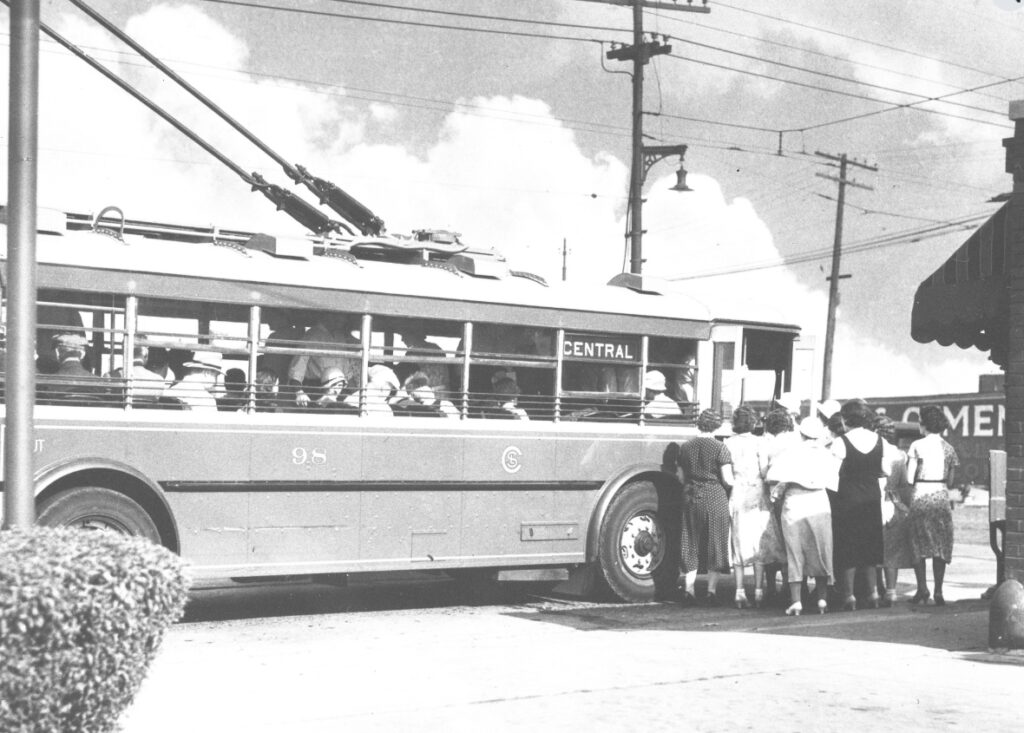
Within the mid-Twentieth century, large-scale city renewal initiatives led to the displacement of tens of hundreds of Black residents. Highways such because the Dan Ryan and Eisenhower Expressways had been constructed instantly by means of Black and Latino communities, bodily dividing neighborhoods and additional isolating residents from job facilities, high quality housing, and reliable transit choices.
These selections didn’t simply reshape town’s geography; they basically restructured entry to alternative.
As we speak, companies just like the CTA and Metra are actively working to enhance transit entry in traditionally underserved communities, aiming to attach residents to jobs, training, healthcare, and different important companies in ways in which replicate their wants, consolation, and existence.
“Metra absolutely complies with Title VI of the Civil Rights Act of 1964 and associated statutes, govt orders, and rules in all packages and actions,” stated Michael Gillis, Director of Communications at Metra.
“Meaning Metra is dedicated to making sure that nobody is denied participation in, or the advantages of, public transportation by commuter rail due to race, shade, or nationwide origin,” he stated.
CTA and Metra: Progress in Underserved Communities
Chicago’s public transit system consists of 8 L practice traces and over 100 bus routes. Moreover, Metra gives commuter rail companies to the suburbs, whereas Tempo affords bus service throughout suburban Cook dinner County and different close by counties.
Nevertheless, underserved areas on the South and West sides of town regularly face restricted entry to coach traces or expertise diminished bus regularity. In neighborhoods like West Garfield Park and South Shore, transit exists, however the prolonged commute instances to succeed in downtown or distant suburbs make it difficult for a lot of residents.
In distinction, neighborhoods with stronger transit entry usually expertise higher funding, greater property values, and elevated enterprise development. Nevertheless, town is actively working to shut the hole between communities with plentiful transit choices and people with restricted connectivity.
Metra Advances Accessibility and Service Enhancements on the South Aspect and Past
Metra’s station renovation program is at the moment targeted on upgrading and making stations on the Metra Electrical Line, which serves the South Aspect of Chicago and the southern suburbs, extra accessible.
“We’ve put aside tons of of hundreds of thousands of {dollars} for this work,” stated Michael Gillis, Director of Communications at Metra. “We’ve already accomplished renovations on the 79th St./Chatham, 103rd St./Rosemoor, 147th St./Sibley, Hazel Crest, Calumet, Homewood, and Flossmoor stations. The newly rehabbed 87th St./Woodruff Station is about to reopen on October 6.”
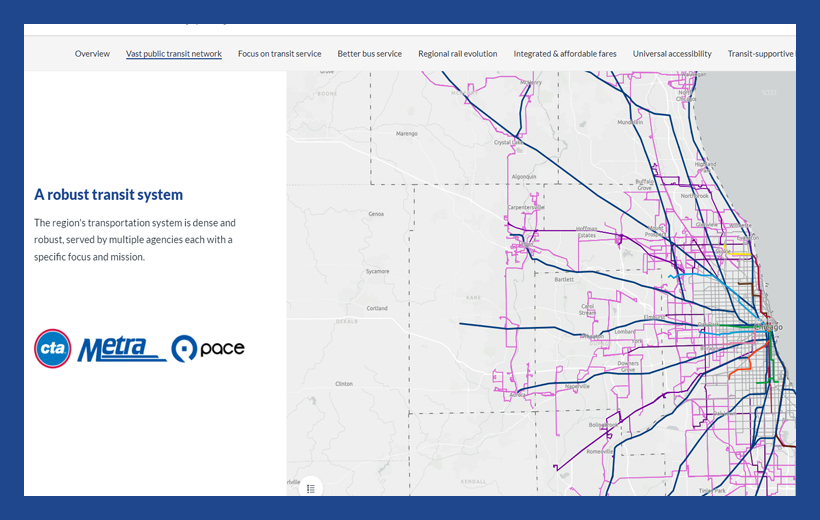
Work can also be underway at ninety fifth St./Chicago State College and is about to start on the Millennium Station’s South Water entrance. Upcoming initiatives are deliberate for Van Buren St., 59th-Sixtieth/College of Chicago, 111th St./Pullman, Harvey Transportation Middle (in partnership with Tempo), Olympia Fields, and College Park.
As well as, the CTA is setting up a brand new, accessible station at Auburn Park, positioned at 79th St. on the Rock Island Line.
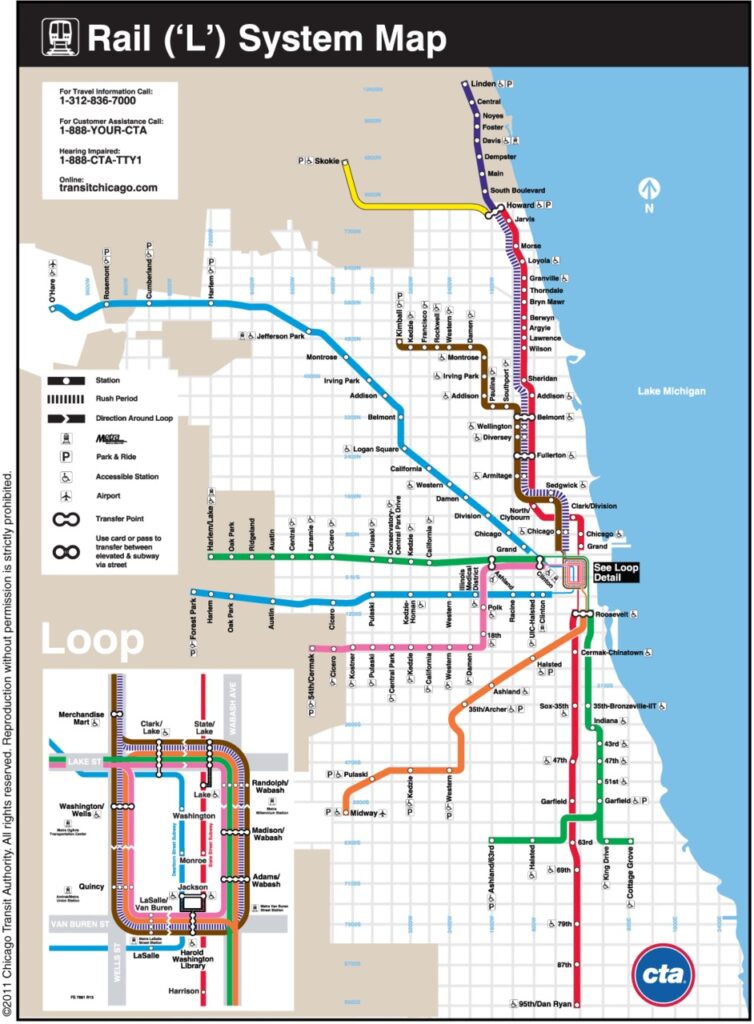
New Fare Construction and Entry Pilot Program Promote Affordability
In February 2024, Metra adopted a simplified fare construction that aligns metropolis fares extra intently with CTA costs and lowers prices in comparison with pre-pandemic charges.
“We’re additionally collaborating with Cook dinner County and the Regional Transportation Authority (RTA) to supply diminished fare tickets to riders with low incomes throughout the area by means of the Entry Pilot Program,” stated Gillis.
All Supplemental Diet Help Program (SNAP) recipients dwelling in Cook dinner, DuPage, Kane, Lake, McHenry, and Will counties are eligible to use for an Entry allow at GetAccess.org. This allow permits use of diminished fare tickets, and this system is scheduled to run from February 1, 2024, by means of January 31, 2026.
Beforehand, Metra and Cook dinner County ran a three-year pilot program from 2021 to 2023, providing diminished fares on the Rock Island and Metra Electrical traces. This program notably elevated ridership in lower-income neighborhoods in comparison with higher-income areas, as detailed in annual reviews.
Investments and Future Imaginative and prescient
The Metra Electrical Line advantages from the most recent fleet within the system, a results of a $585 million buy made within the 2010s. For the federal fiscal yr 2024, Metra met its federal and state Deprived Enterprise Enterprise (DBE) contracting objectives. Moreover, 37% of initiatives within the 2025 Capital Program are positioned in or adjoining to Traditionally Deprived Communities.
“The Metra Electrical Line is a serious energy for town; we run extra trains on that line than every other,” stated Gillis. “We wish to enhance practice frequency systemwide. Our present strategic plan envisions frequent, all-day service, although making {that a} actuality would require important infrastructure investments and elevated working funds. We’re creating a Systemwide Community Plan to determine what enhancements are wanted by line.”
Security and Safety on Metra
When requested about security’s affect on transportation and job entry, Gillis highlighted that security is Metra’s highest precedence.
“We use a variety of techniques, methods, and insurance policies to guard our riders,” he stated. “Our police division officers regularly patrol trains and stations to supply seen safety and deter crime. We additionally conduct common grade crossing enforcement to remind the general public to obey security measures. Moreover, we maintain an annual security poster contest for native schoolchildren to advertise security consciousness.
Transit, Fairness, and Neighborhood on the Transfer
At the moment, there aren’t any formal insurance policies between employers and transportation suppliers to coordinate efforts or guarantee equal entry to dependable transit and job alternatives for all employees, no matter the place they stay.
To really shut the fairness hole, town continues to concentrate on bettering service reliability, whether or not meaning serving to a mom get to work, a scholar attain college, or a retail employee arrive on time.
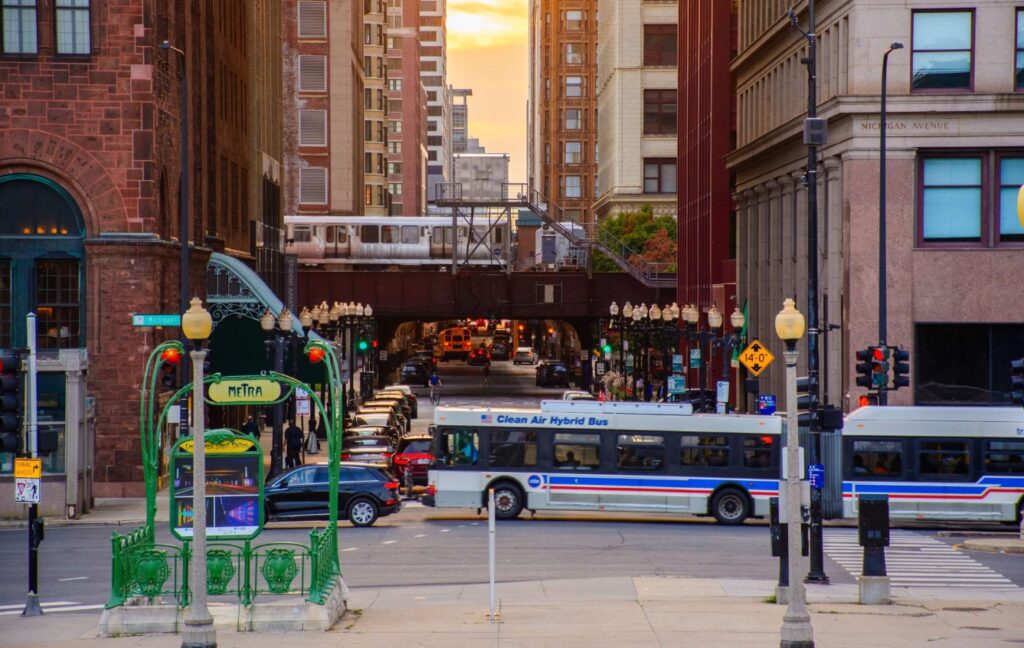
However amid critical funding issues, Chicago’s transit companies are additionally attempting to maintain issues enjoyable and community-focused. With the CTA, Metra, and Tempo dealing with a mixed $771 million price range shortfall in 2026, and potential service cuts of as much as 40 % if new state funding isn’t secured, questions loom concerning the future. May we see important reductions in service hours, corresponding to limiting CTA buses and trains to simply 6 a.m. to 9 p.m.?
Nonetheless, riders may have causes to smile, because of inventive collaborations that remember Chicago’s tradition and neighborhood.
Probability the Rapper and CTA: A Chicago Second
Early Friday morning, Probability the Rapper shocked followers with a history-making second at his childhood practice cease. By way of a secret invitation, followers had been advised to examine in by 10 a.m. at a thriller Crimson Line station. The vacation spot: ninety fifth and the Dan Ryan, the place Probability debuted his newest mission, Star Line.
Those that joined the experience had been handled to a full-blown celebration on the finish of the road, full with free CTA merchandise in Star Line’s signature inexperienced and purple colorway, a sweet desk stacked with Probability’s favourite Chicago snacks, unique Probability and CTA paintings, and photograph ops with The Rapper himself.
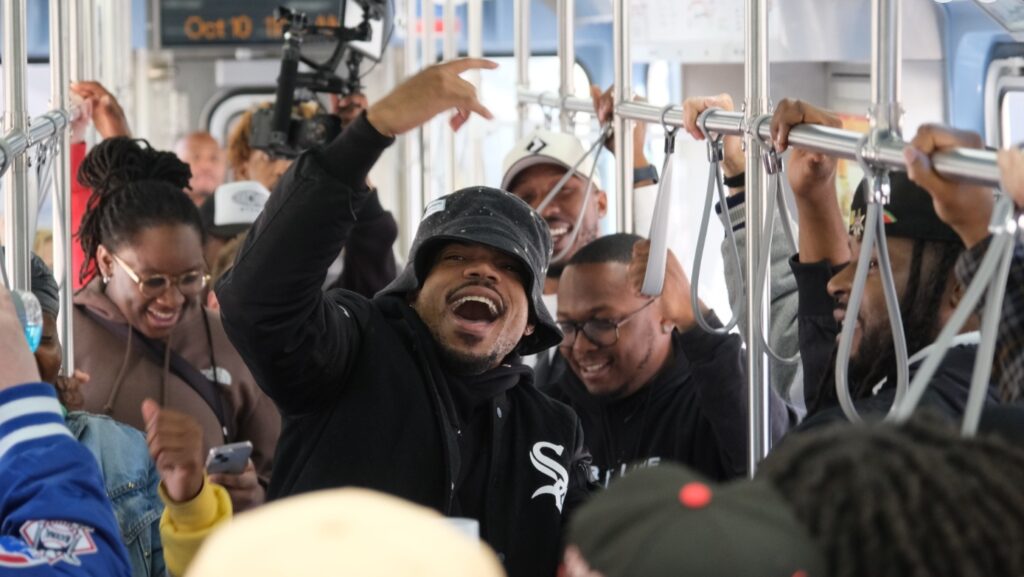
The CTA plans to maintain the momentum going by internet hosting extra particular occasions and its beloved vacation trains all through town every season.
Metra’s Café Automobile: A Commuter Experiment
In the meantime, Metra is taking a special route to have interaction its riders. The company not too long ago unveiled a mannequin Café Automobile, providing complimentary snacks and drinks that rotate throughout rush-hour trains on its busiest traces.

Passengers are invited to weigh in by means of an onboard survey accessed by way of QR code, a part of Metra’s suggestions initiative, to find out whether or not the idea ought to grow to be everlasting.
Survey questions ask riders how usually they take Metra, which line they use, and the way they’d fee the Café Automobile’s house, consolation, and menu choices. In change for his or her suggestions, commuters get pleasure from free canned iced espresso, soda, chips, and different treats.
“We’ll simply take , laborious have a look at all of the responses we get from individuals and determine whether or not to go ahead with it, and the way extensively to go ahead with it at that time,” stated Michael Gillis, Metra’s director of communications.
To remain knowledgeable about updates and occasions throughout Chicago’s transportation methods, go to:

